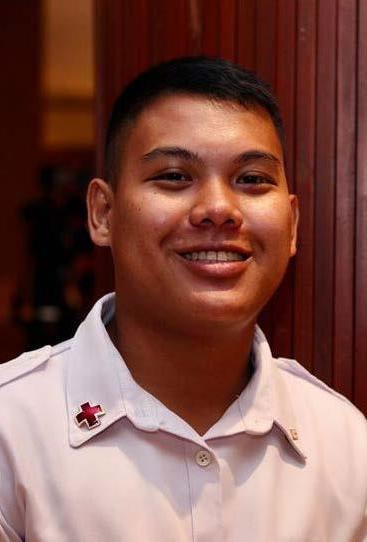
9 minute read
ARTS
ARTS
Stroking tones with values
Advertisement
Stories of the monochromatic and polychromatic Lacsonian artists who sell their work during the pandemic.
words by RENGIL MANA-AY &PAUL IVAN QUEZON photo courtesy of KENNETH MUNEZ & CHRISTIAN OCTOSO
Kenneth Muñez and Christian Octoso are contrasting artists. The former masters the shades of gray in portraiture, and the latter screams a palette of colors in oil painting. One of them happened to hone his skill in a short period of time, while the other has already spent years finding himself in his own art. The two of them might be different in some ways, but both tell the same strokes of struggles and earning out of their skills.
MOnOChROME iS COlORFul
It was summer in April when Kenneth suddenly decided to grab a sharpened pencil. The feeling seemed familiar to him as it brings him back to five years ago when he had the keenness in scribbling lines and patterns— but this time, it is the faces of the people that he sketches on a blank piece of paper. It kept him busy during the long quarantine period. He made use of almost four months of his vacation to improve his talent in visual arts— portraiture in particular. Every stroke ignites the hope of easing the burden of his parents. Rekindling with his old interest, it lit a dying flame and fueled the passion that he now uses to help his parents in their finances. At 19 years old, he was able to earn some money out of his drawing commissions from the people in their community in Sagay City who saw his natural talent in art.
Graphite, charcoal, stick glue, and kneadable eraser are the media he utilizes on vellum boards. These little investments
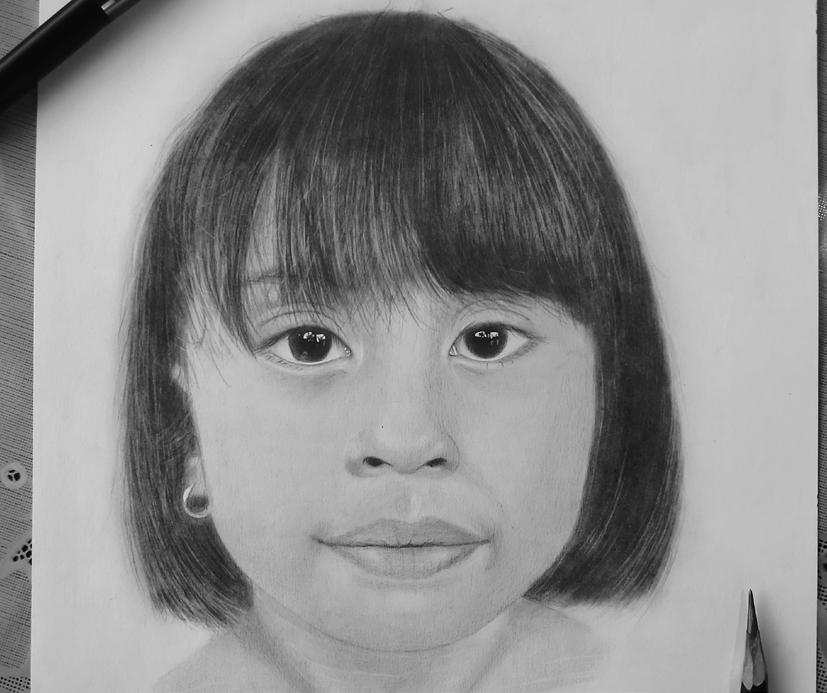
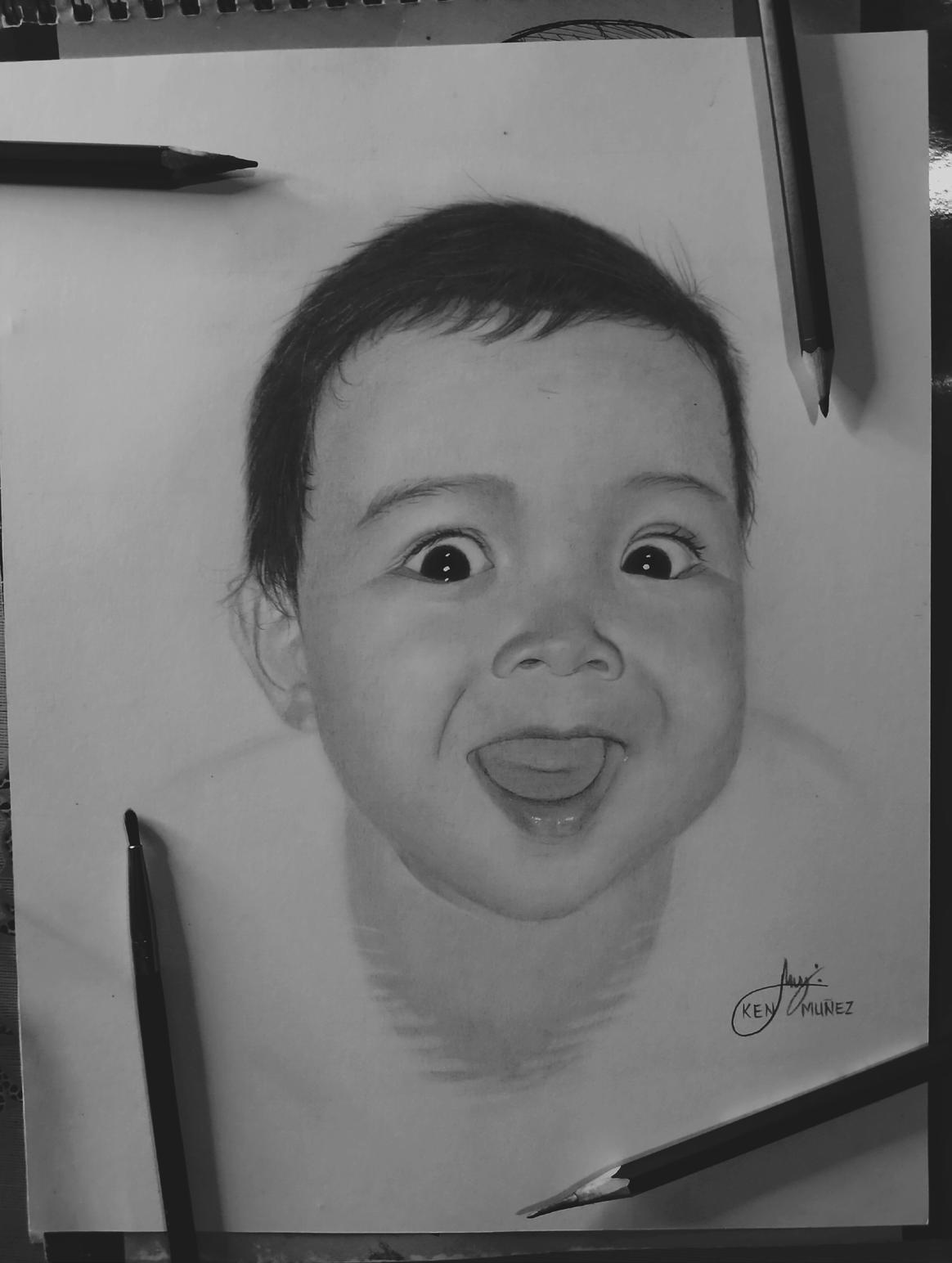
helped Kenneth start his commission portraits. He drafts a grid to estimate the proportions of the face. In shading, he applies a cross-hatching technique. It’s to create tonal effects by varying the spacing of lines or by adding a layer of lines to blend the subjects smoothly. Meanwhile, in details like hair, he plies charcoal to underscore the dark shade and stick glue to highlight the lighter parts. These, he said, are crucial in making portraits realistic and appealing to the eyes of the clients.
The struggle is real for Kenneth, hence every commissioned work is light to his candle. He treats it as equally important to his love for his craft. According to him, the main reason why he persevered in improving his talent is because of the school fees. He cannot take the burden of seeing his parents troubled with the cost of his education. He’s currently a sophomore taking up BS Marine Engineering at John B. Lacson Colleges Foundation- Bacolod. “Ang pinaka-main reason ang balayran sa eskwelahan, para makabulig ko sakon parents kay kabalo ko nabudlayan gid sila kapin pa wala trabaho si Papa kag gasalig lang kami sa mga baboy namon. Ti kung magnubo price sang baboy like subong kay pandemic, yawan gid kami. So para makabulig ko, gina himo ko racket akon drawing (The main reason why I want to help my parents is because I know they are having a hard time, especially my father is jobless and we just depend on our hogs. If the prices of the hogs are low, it would be difficult for us. So in order to help, I made my drawing skill to be a way),” he shared.
In seven months, he had nine commissioned works. He earned from as low as 250 pesos to 1,200 pesos. But not every day is a sunny day for Kenneth. Three of which scammed him after receiving the portraits
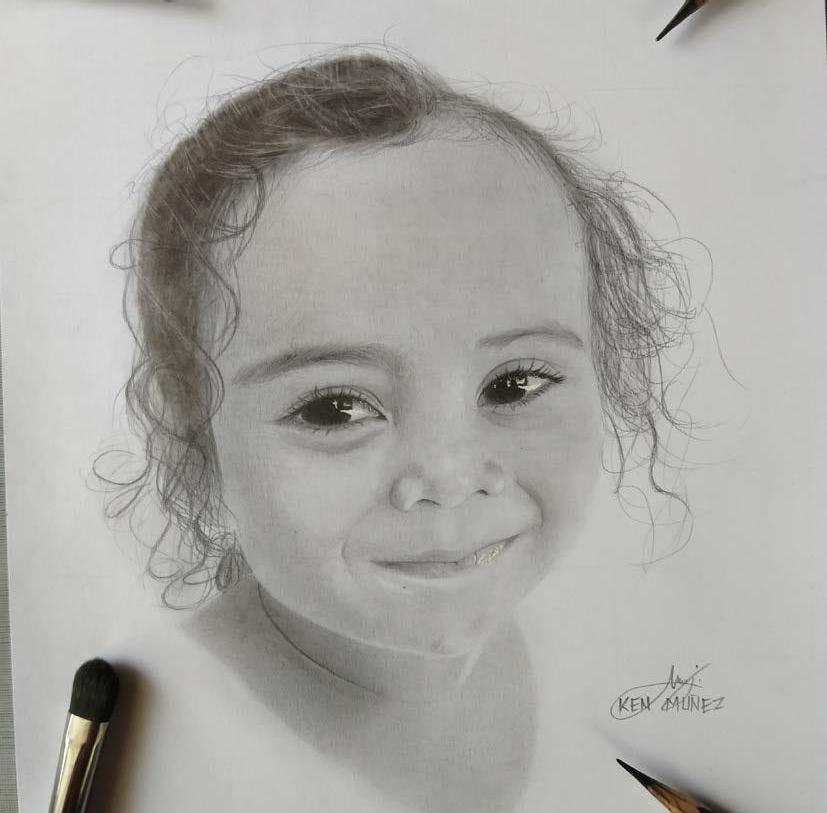

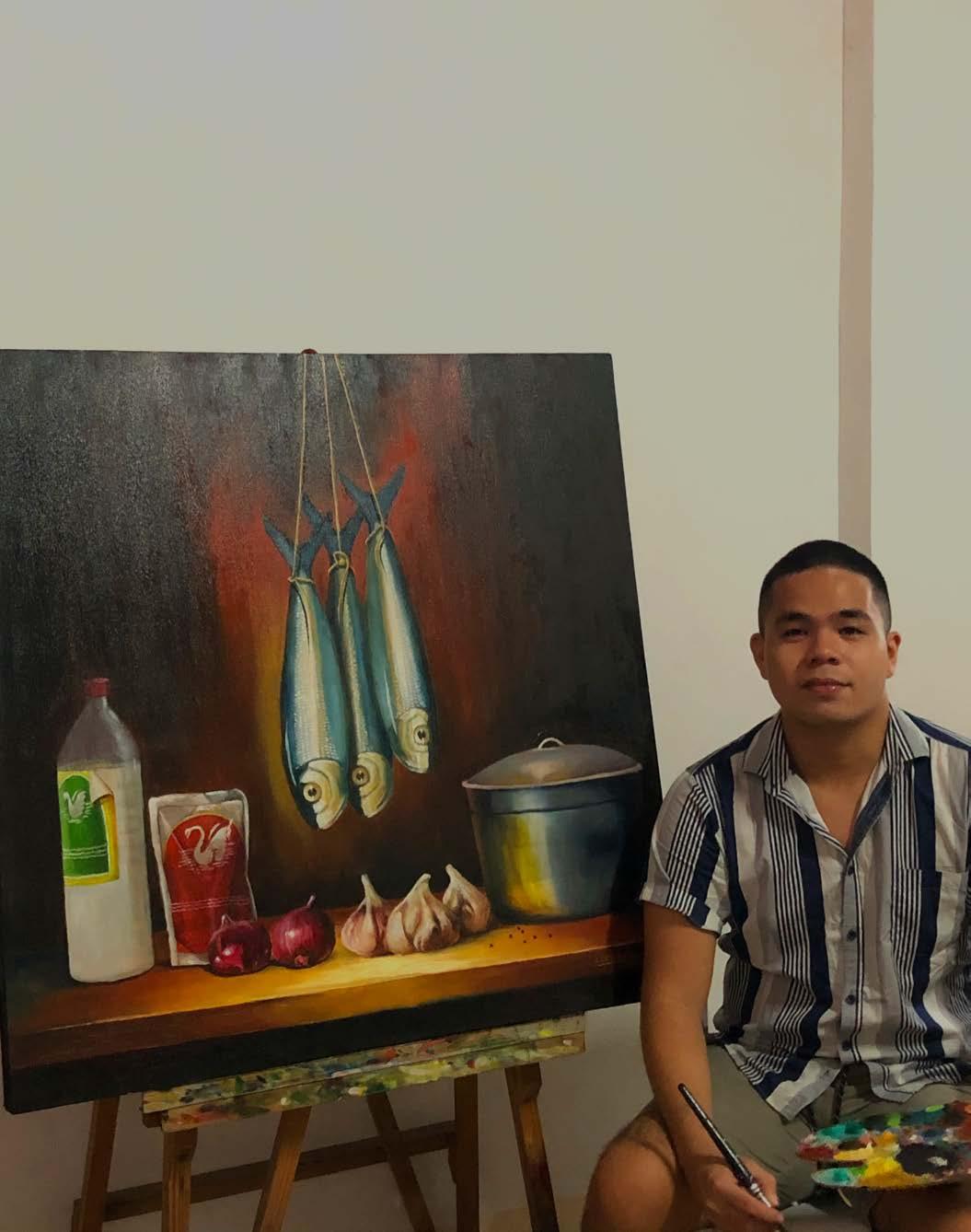
(left to right) INPIRASYON SA PAGPADAYON, SYNERGY ,
ABUNDANCE, UNSUNG WEARY WORKER

without compensating the efforts he has poured.
When his first-ever client slunk and turned him down, he initially thought he was up for no good. It hit him to his core. But later on, he realized that instead of feeling bad, he should make it a reason to strive harder. “Sa una-una gid may mga tawo nga ga-down simo bala like sa first client ko pero ginhimo ko na lang as inspiration nga maybe waay nila nabayaran bangod law-ay ubra ko so dapat i-push ko harder akon skill para malab-ot ko ila satisfaction (At first, there are people who will put you down like my first client. But I just turned it into an inspiration that perhaps he did not pay me because my output was not good so I have to push myself harder so that my skill will meet their satisfaction).”
Through art, he has felt a boost in his confidence. It has become his outlet for his negative emotions like stress and anxiety, for widening his creativity. Despite the struggle of being a small-time artist, for Kenneth, art is becoming a lending hand to help in his studies and expenses, and most of all, for him doing art is a pleasure.
pOlyChROME iS ORdinaRy
The long quarantine period has been nothing but colorful to the likes of Christian Octoso, who turned blank white sheets into still life paintings. At 20 years old, he was able to provide for himself and his family by making money out of his painting commissions, aiding their needs amidst the pandemic. On top of that, Christian also wants to share his talent, steadily letting himself be renowned as an artist.
Throughout his career, Christian has already sold four of his paintings and has helped him and his family financially. He only started selling them when the pandemic began, and his works range from six thousand to fifteen thousand pesos. Fruitful earnings by stroking passion into his work.
Christian’s career as an artist started when he was seven. His mother enrolled him in a local summer art workshop where his interest in arts bloomed. They were taught how to use watercolor— his first medium, during the first few years. After discovering oil painting when he was 15 years old, he fell in love with it and became his primary medium. He loved how the vibrant hues play in his canvas and create realistic images as his strokes become more precise.
It inspires him if other people would see the world through his perspective by painting them. His interest in still life paintings is inspired by everyday objects he sees. Whenever he tries to start painting, he would look at some similar works for inspiration. Christian admits he still hasn’t reached the stage where he has established his distinct approach when it comes to painting. “I am still in search of who I am as an artist. As of now, I am honing my skills in Realism in which all artists start with.”



Christian always start each painting with imprimatura which uses an earth color such as burnt umber or raw sienna. Its purpose is to give artists a better sight of what appropriate hues they could utilize. He also sticks to the ‘fat over lean’ principle when starting the actual painting. It is applying paint with a higher oil to pigment ratio (fat) over paint with a lower oil pigment ratio (lean) to avoid cracking your painting. Oil painting requires a lot of time before it dries. Sometimes, he observes the alla prima technique or the wet-on-wet method, where you apply more colors over layers of paint while they are still wet. He always felt challenged on the process. There are times that he would start all over again or try to reposition certain elements within the space to make the composition of the painting much better. “After finishing a painting, the satisfaction I feel is always incomparable, especially if it came out the way I wanted it to look,” he expressed.
Painting as his primary leisure has its perks. Christian has already garnered awards and recognition over the years with his talent. In his hometown Victorias City, he has won the grand prize in Victorias Milling Company’s inter-school art contest and got him featured in a local newspaper and his winning piece displayed in VMC’s 2016 calendar. The painting also earned him a spot in the coveted Unit Model Cadet selection of JBLCF-B last 2018 by winning the Best in Talent award. He also represented the school in various national poster making contests: winning as champion in an event held in Baguio City and a finalist during the National Seafarers’ Day held in Intramuros, Manila.
For Christian, accepting criticism from other people is very important. However, he does not let people dictate how one should approach his art. Picasso, Van Gogh, and other prominent artists may not have the most realistic works, but it was their distinct approach and unconventional methods that made them famous. He also suggests starting with the basics— especially with Realism—to serve as the foundation as you search for your forte. “Always find who you are as an artist,” he said. “Establish your own identity that when people see your art, they would immediately know it is you.”
He would always be proud of all the positive feedback he receives from his clients. They would message him and tell him how beautiful his paintings hang on their walls. He sees this as a great implication of his skill as an artist.
During the hard times, when we find it hard to keep going, admittedly or not we often run to arts—films, music, literature, and paintings. Art is present in so many of the places we go to and the things we do. Live in it, support the people who do what they are passionate about, and maybe even spread the word. It has always been difficult for artists to make a living, let us help make it better.





